Original URL: https://www.theregister.com/2006/07/14/intel_core2_duo/
Intel 'Conroe' Core 2 Duo and Core 2 Extreme
Intel's next-gen architecture - it's here
Posted in Personal Tech, 14th July 2006 05:02 GMT
Review It's been a month and ten days since Reg Hardware previewed Intel's Core2 Duo processor, but now we have the official, shipping, ready-to-slap-in-your-PC product. So is it really as good as the early numbers indicated? Read on, read on...
To test its new baby, Intel sent out one of its own D975XBX motherboard with a beta BIOS that adds support for the Core 2 Duo processors. We also received a Core 2 Duo E6700, clocked at 2.66GHz, and a 2.93GHz Core 2 Extreme X6800. There was also an ATI Radeon X1900 XTX and an X1900 CrossFire Edition graphics card in the goodie box to try and keep the test rig similar to the one Intel provided for us for the controlled preview t'other month. For comparison, we used our own 3.6GHz Pentium D 960. Crucial supplied 2GB of its latest Ballistix DDR 2 memory, although the Intel motherboard didn't allow it to be clocked higher than 800MHz even though it can reach speeds of 1GHz. Finally, a Western Digital Raptor X hard drive completed the system sitting on the Reg Hardware test bench.
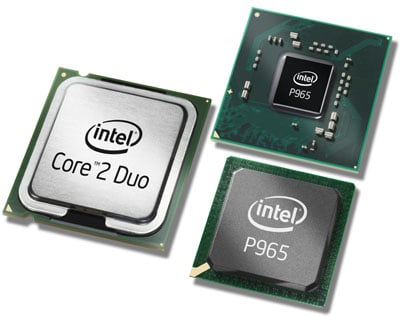
This is hardly your run of the mill PC, but as we're concentrating on the CP, the fast hardware will remove most of the bottlenecks. The 975X chipset remains Intel's top-of-the-range product, with the newer 965 family coming in below it. However, if you currently own a 975X-based board, don't expect this to be compatible with a Core 2 Duo, thanks to Intel's tinkering with the power-regulation specifications. This is fairly normal, though, and it's something that happens during most processor revisions from Intel. But it's no less frustrating, especially if you've just got a new PC and you thought you might just be able to pop a Core 2 Duo into it.
But enough talk - you want to know the facts and figures: how fast is it? Is Intel the new king of the performance crown? Let's start with SYSMark 2004SE, our standard general applications benchmark. Amazingly, even the E6700 is 105 points higher than the Pentium D 960. If you consider that the reference platform that BAPCo used for the baselines score of 100 is a 2GHz Pentium 4, you quickly realise that the Core 2 Duo is a different breed of processor. The Pentium D 960 scored a - to now - very respectable 260 points. That means that the E6700 offers some incredible advance in processing power on a wide range of commonly used applications.
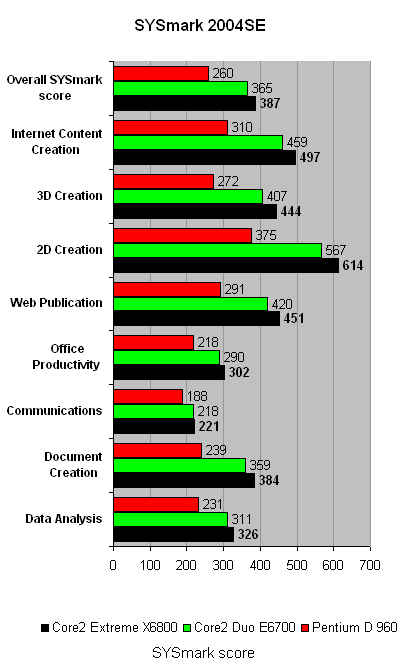
The Core 2 Extreme X6800 adds a further 22 points to the E6700's score, which is what you'd expect as an incremental performance increase between the Extreme and vanilla versions of the new CPU. The reason: the X6800 has a higher clock speed than the E7600, and that's it. It doesn't use a faster bus speed as has been the difference in the past between Extreme Edition and regular Pentium 4 processors. It is, of course, multiplier-unlocked still, so the overclocking potential is unchanged.
The PCMark 2005 results are likewise much better for the Core 2 Duo parts than the Pentium D 960, although the frontside bus speed difference would have had a larger impact here. However, the numbers for the E6700 were not quite as high as those in the initial performance preview. This is likely to be related to slightly different system specifications and configuration, and the differences are rather small.
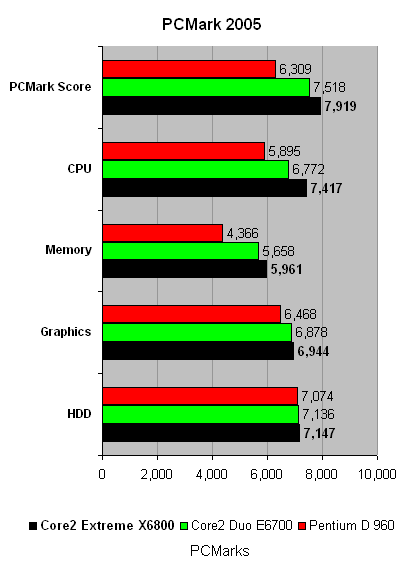
For folks into 3D rendering, the Core 2 Duo architecture will save a lot of time. Starting with POV-Ray the Pentium D 960 took 6m 50s to render the default test with both cores, and 13m 24s on one core. The E6700 shaved over two minutes off the dual-core time, taking just 4m 30s/ The single-core test took 8m 58s. The X6800 took 4m 9s dual-core and 8m 9s single core - a 39.3 per cent and 39.2 per cent improvement, respectively.
The Core 2 Duo processors are definitely bringing some real advantage to multi-threaded applications, and as you can see from the CineBench 9.5 graph there's a huge improvement when you move to multi-core rendering. The X6800 isn't far from being twice as fast as the Pentium D 960 here, which is very impressive considering it has a much more modest clock speed.
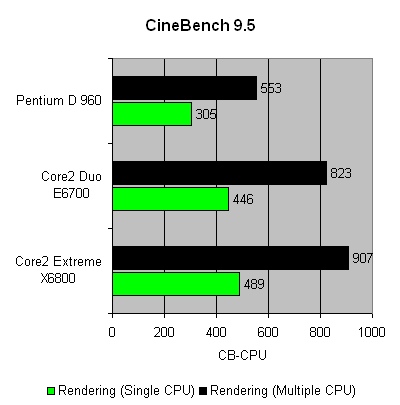
So what about gaming? Well, we had some issues with an unhappy CrossFire config, so the 3D tests are something we're going to have to re-visit at a later stage. However, in 3DMark 06 the Core 2 Duo processors doesn't appear to have a huge lead over the Pentium D 960, but the my impression of the time it took to run the benchmarks was that the Core 2 Duo chips were clearly faster.
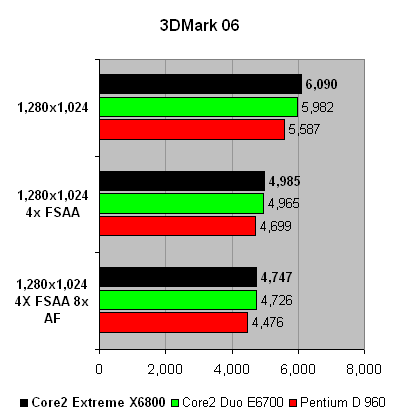
Moving on to real games, the Core 2 Duo processors are once again miles ahead of the Pentium D 960, with the X6800 almost being twice as fast in Half Life 2. The E6700 doesn't seem to be very far being in Far Cry though, even beating the X6800 when using 4x FSAA, but this is likely to be down to the graphic card not being able to process the data fast enough.
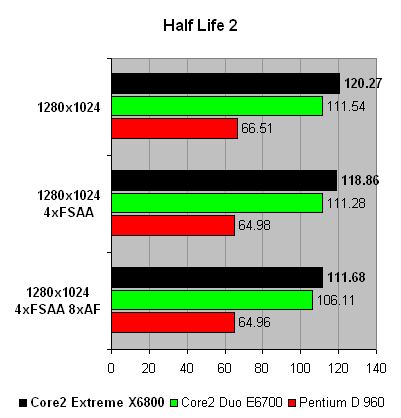
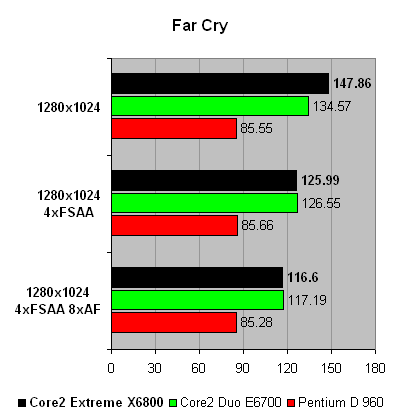
Intel has proven that it can make a very fast processor that doesn't need to run hot and noisy, something it should have done a very long time ago. There is still no official UK pricing but Overclockers UK has had prices up on its site for a few weeks now. Interestingly, Intel is planning to sell the Pentium D 960 for the same price as the E6600 Core 2 Duo part, but I can't see anyone chosing a Pentium D over a Core 2 Duo. Don't forget, the Core 2 Duo has a lower TDP.
The X6800 has an Intel list price of $999 (£543) and the E6700 comes in at $530 (£288), although the E6600 would be the one to go for at $381 (£207) as it should offer quite a lot of performance for the money.
Verdict
Intel once again has the fastest desktop processor on the market, and AMD is either going to have to start competing on price again, or pull something out of a hat to beat the Core 2 Duos speed. AMD is by no means a lost cause, but if you're after the best performing desktop processor on the planet, you'e going to be shopping for an Intel Core 2 processor. ®